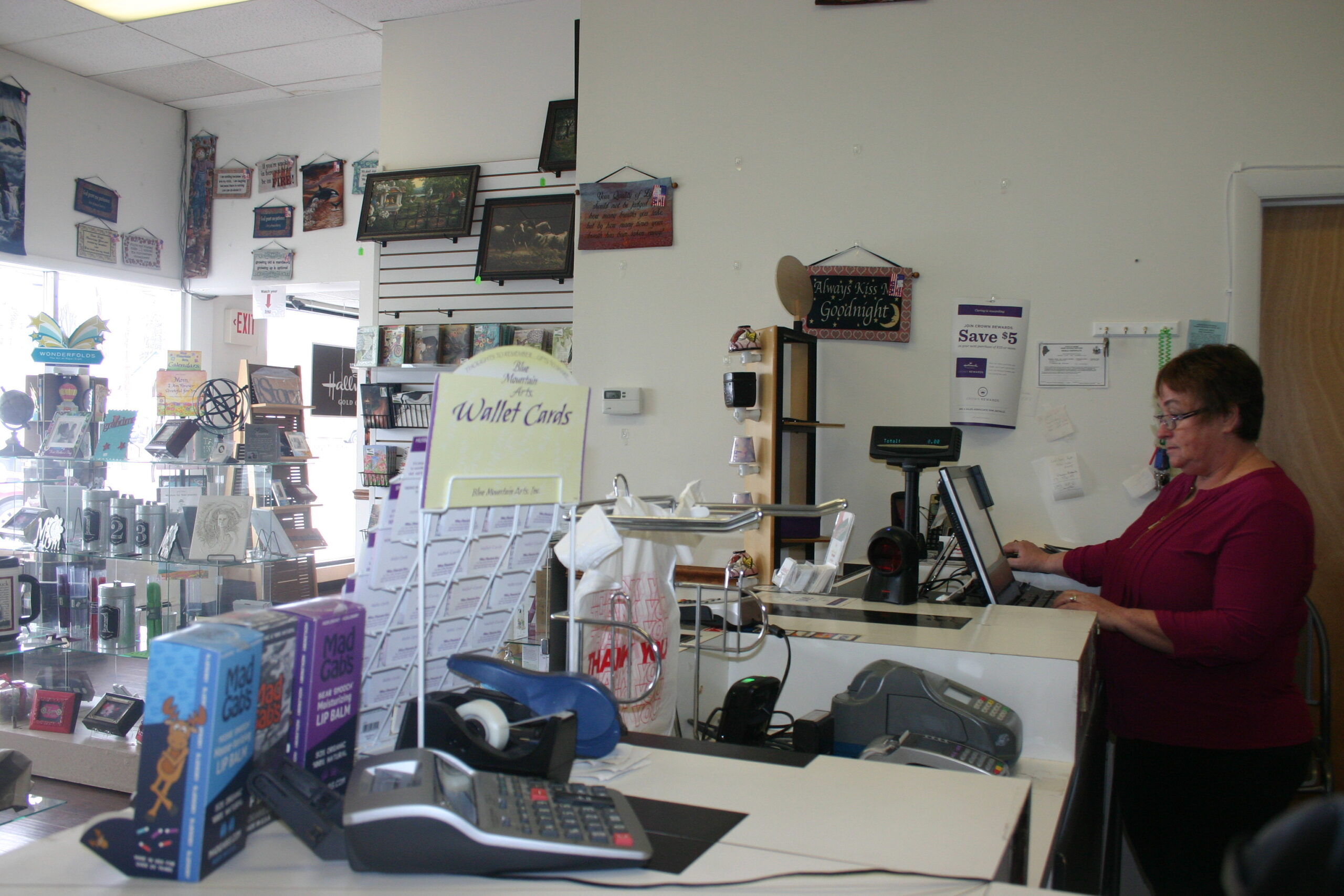
PRESQUE ISLE, Maine — Ever since the state minimum wage began increasing by $1 every year in 2017, business owners and employees in Aroostook County have thought much about how future increases might impact the region’s economy and their own lives for better or worse.
Mike Blier, owner of GiftSmart on Main Street in Presque Isle, admits that unlike many small business owners in the state, he fully supports the planned minimum wage increases to $11 per hour in 2019 and $12 per hour in 2020.
“It’s disgraceful that the minimum wage was $7.50 per hour for all those years. We’re losing our smartest and brightest young people every day because there’s no opportunities for them with lower wages,” Blier said. “The wage increases will give people a chance to earn livable wages.”
More than 55 percent of Maine voters passed a referendum in the 2016 election to increase the state minimum wage to $12 per hour by 2020 through yearly $1 increases, the first of which began in 2017 with a jump from $7.50 to $9 per hour. The current minimum wage is $10 per hour.
Blier stated that although he has always paid his employees higher than the current minimum wage, he feels strongly that the upcoming wage increases will help Aroostook County’s economy in the long term.
“My hope is that once all the increases occur, minimum wage workers will have more disposable income, which will give them more money to spend at businesses,” Blier said. “I can’t say that the higher wages have affected my employees because how many hours they work depends on how busy we are. But if more people are spending money in the economy and we get busier, I’d be willing to give them more hours.”
“The problem is that prices keep going up every year, but peoples’ wages have stayed the same until now,” he said.
The dilemma that Blier referred to is known as inflation, a general increase in prices for goods and services that occurs in the economy over a period of time. Robert Murray, professor emeritus of business at the University of Maine at Presque Isle, notes that prices tend to increase by one to four percent every year. But unlike Social Security, federal or state governments set minimum wage levels, keeping those wages separate from the consumer price index, which measures the average change over time in the prices of certain goods and services.
“When I was in high school in 1961, I had a minimum wage job and got $1.25 per hour. If the minimum wage had kept up with inflation since then, it would already be $11 per hour today,” Murray said. “The question is ‘What should we do with the minimum wage now?’”
Maine legislators continue to be divided as they seek the answer to that question. On March 22, the Maine House of Representatives voted 81 to 69 to reject a proposed bill to roll back the minimum wage increase from $1 a year to 50 cents per year and to cap the increase at $11 by 2021. The House also has since rejected an amended version of the bill, by a vote of 75 to 72, that eliminated an earlier cut of the current minimum wage to $9.50 with a 50-cent per year increase.
- GiftSmart, pictured here on April 12, sells specialty cards and gift items from its location on Main Street in Presque Isle. Store owner Mike Blier says that he supports upcoming increases of the state minimum wage of $11 per hour in 2019 and $12 in 2020 as a way to help workers earn a livable income and boost Aroostook County’s economy. The current minimum wage is $10 per hour and began increasin (Melissa Lizotte)
Democrats in the House have largely supported keeping the already scheduled increases, citing a higher minimum wage as a major factor in improving workers’ lives and putting more money into the state’s economy. Republicans have aggressively advocated for amendments to the bill, claiming that the $11 and $12 increases will force small business owners to cut back on employee work hours and/or lay off much of their staff to adjust to the higher wages.
Curtis Picard, president and CEO of the Retail Association of Maine, recently said that his organization advocated for the 50-cent increase, rather that $1, and for a “training wage” of 80 percent of the current minimum wage for 18- to 20-year-olds. If the former bill had passed, the legislation would have established a training wage of $7.50 per hour. Picard noted that when the state minimum wage was $7.50, he and many business owners supported what they believed was a “reasonable” increase to $10 per hour. Any amount higher, he said, would hurt small businesses.
“I know of some business owners who have had a little trouble with the increase to $10 per hour, but many more have said that once the wages get to $11 and $12 per hour they might have to cut back on hours or, in the worst case scenario, close up shop.”
Picard noted that rural grocery stores, such as those in Aroostook County, would benefit from a training wage because those businesses often give younger employees their first paid work experience.
“If the wages are too high, many employers might not be able to offer young people their first job,” Picard said. “I think that’s why for the first time we’re seeing the numbers of workers aged 16 to 19 at one of the lowest points ever.”
His view is one that Joshua Tweedie, president and owner of Star City IGA in Presque Isle, Fort Fairfield and Mars Hill, shares.
“I’ve cut back on the total amount of hours my employees work at each store and have had to do minor price increases on a few items,” Tweedie said. “In a couple of instances where people resigned, I have not replaced them because of the higher mandated wages.”
Tweedie stated that he would support a legislative compromise in which the minimum wage stayed at $10 per hour through the end of 2020 and then began increasing by 50 cents per hour in January 2021 until the wages become $12 per hour in 2024. He also would like to see legislators establish a student wage at possibly $2 per hour or less than the current minimum wage for employees 18 years or younger.
“If no one addresses these issues with the minimum wage increases, I guarantee you’ll see many businesses both small and large close up around the state. The way it is now isn’t feasible for most businesses,” Tweedie said.
Despite pushback from some business owners, many employees throughout Maine who work for minimum wage have defended the upcoming increases as a way to help individuals improve their quality of life.
“I think overall the increases are a good thing because it gives minimum wage workers a chance to actually get by,” Garrett DeLong, a professional communication and journalism student at UMPI, said.
DeLong is a junior at UMPI and has spent the past several years working in the meat department at Star City IGA in Presque Isle for minimum wage. He said that as a college student, the higher wages have given him more financial stability while he balances work hours with academic demands.
“At $7.50 per hour I had to make more sacrifices as far as food and other expenses and it was more of a struggle to balance earning my degree while also working enough hours,” DeLong said. “I think in general the wage increases will make people work harder because they know they’ll be compensated more for their efforts.”
Regardless of personal opinions, the debate surrounding further minimum wage increases is not going to end any time soon, particularly with the ever-present political divisions in the state Legislature.
“The minimum wage is essentially a political issue that liberal and conservative economists have always been divided on,” Murray said. “For every study that shows positive effects of a wage increase on the economy, there will be another study that shows negative effects. It’s essentially up to the two parties to hear both sides of the issue and negotiate a compromise.”





